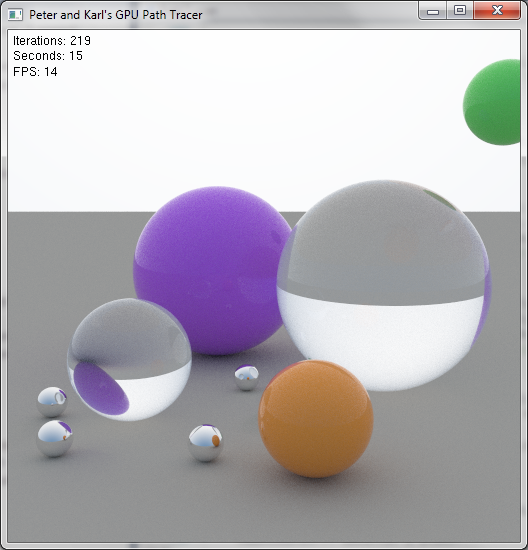This post is the third update for the GPU Pathtracer project Peter and I are working on!
Over the past few weeks, the GPU Pathtracer has gained two huge improvements: refraction, and major speed gains! In just 15 seconds on Peter's NVIDIA GTX530 (on a more powerful card in the lab, we get even better speeds) , we can now get something like this:
Admittedly Peter has been contributing more interesting code than I have, which makes sense since in this project Peter is clearly the veteran rendering expert and I am the newcomer. But, I am learning a lot, and Peter is getting more cool stuff done since I can get other stuff done and out of the way!
The posts for this update are:
1. Performance Optimization: Speed boosts through zero-weight ray elimination
2. Cool Error Render: Fun debug images from getting refraction to work
3. Transmission: Glass spheres!
4: Fast Convergence: Tricks for getting more raw speed
As always, check the posts for details and images!




